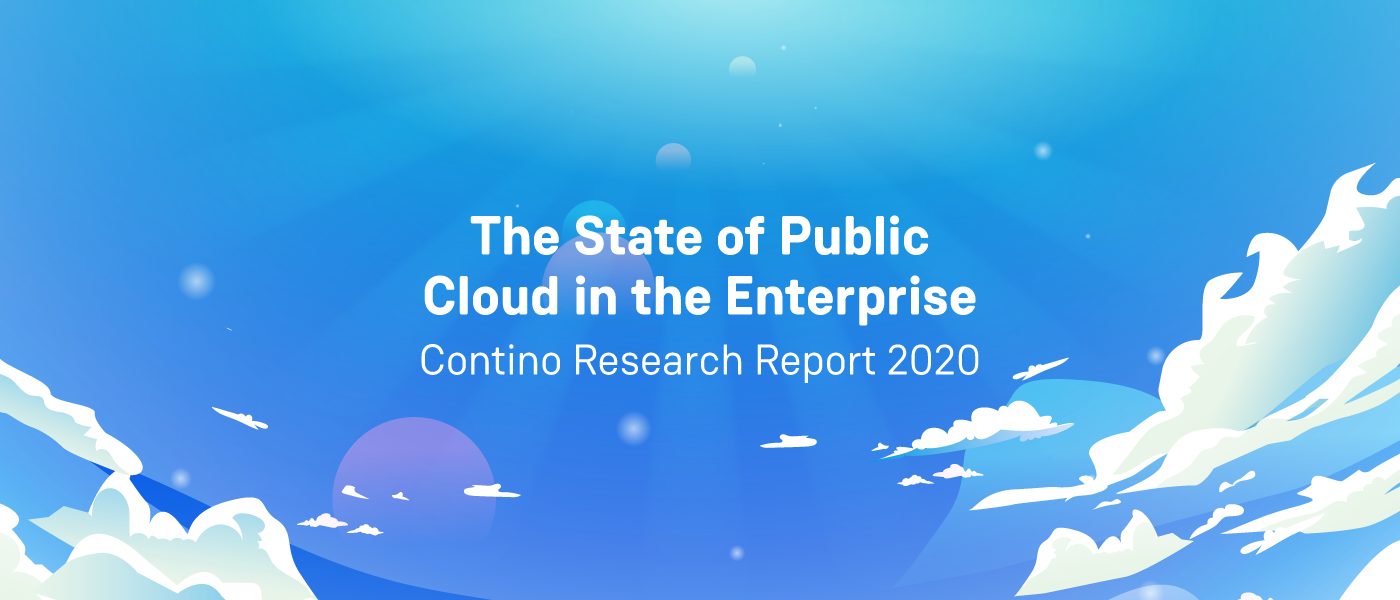The State of the Public Cloud in the Enterprise [Contino Research Report 2020]
How are enterprises using the public cloud? How mature are cloud programs and operating models? What are the main technical and business benefits? What is holding businesses back? What are the next steps?
At the beginning of 2020, the Contino team set out to answer these questions.
We asked 250 IT decision-makers at enterprise companies with over 5,000 employees from across Europe, USA and APAC about the state of the public cloud in their organisation. The respondents ranged from engineers and managers to directors and C-levels.
Our findings tell the story of why the public cloud is the biggest enabler in a generation. And where enterprises need to focus to bring their cloud programs to the next level.
Here are some of our findings around the key trends and challenges in the world of enterprise cloud!
First and foremost, the technical and business benefits of the cloud are unequivocal.
99% of respondents reported technical benefits versus on-premises. The top three being greater efficiency, scalability and agility (ability to quickly provision infrastructure).
From a business perspective, the results are very interesting. 100% of respondents reported business benefits from their public cloud program. The most-cited benefit is making IT more responsive to the needs of the business.
This is a testament to the power of the cloud and how it can be such a powerful enabler of the business, ensuring that tech prowess is not merely aesthetic, but contributes directly to business goals.
Public cloud adoption is wide, but not necessarily deep. We are still in a period of transition and experimentation.
Among all our respondents, only 1% have not yet dipped their toe into the cloud in some way. Of the 99% who have, over three quarters (77%) are using the public cloud as part of their estate (as opposed to private).
The most popular approach is hybrid cloud (reported by 50% of respondents) and only 13% of enterprises are making heavy use of the public cloud across their business, suggesting that the enterprise is still in a period of transition from the use of on-premises towards private and public clouds.
Advanced cloud services tell a similar story. Serverless and container technologies are being used by 49% and 30% of respondents respectively. Yet they are only used by 6% and 12% of respondents, respectively, as a standard way of deploying systems. They are still being used experimentally!
The public cloud, then, is firmly entrenched in the enterprise IT landscape. But, clearly, the vast majority of cloud programs are not fully mature, have not yet been adopted by businesses as the central IT platforms for their whole business and are still rather experimental in nature.
Security and compliance are the biggest barriers to adoption (but the cloud is also seen as more secure and easier to stay compliant on than on-premises).
Security and compliance are judged to be the biggest barriers to further adoption of the public cloud, cited by 48% and 37% of respondents, respectively.
However, for the majority the cloud is more secure and easier to maintain compliance than on-premises (64% and 72%, respectively). Only a tiny minority (7% for security; 4% for data) find that the public cloud is less capable in terms of both security and data compliance than on-premises.
Although superior in terms of capability, switching to cloud-native security and compliance models is a struggle for some enterprises.
Almost everyone is planning on growing their cloud program...despite lock-in concerns.
The vast majority respondents (84%) will continue on with their cloud journey. 36% will go full-steam ahead, migrating “as quickly as is feasible”, with 48% migrating more cautiously.
Lock-in appears to also be a major issue for most enterprises. An astonishing 63% are ‘somewhat’ or ‘very much’ afraid of the consequences of putting their eggs in the cloud basket, while only 5% are not at all afraid.
This is somewhat at odds with the fact that 77% that are using the cloud in some degree, suggesting that the potential benefits of the cloud outweigh the risks of lock-in in the minds of enterprises.
Summary
The public cloud is firmly entrenched in the enterprise IT landscape. The vast majority of enterprises are using the public cloud, seeing substantial technical and business benefits, and planning on expanding further.
But they are still in a period of transition, with fully-fledged cloud programs a rarity. The kinds of platforms and services in use, contrasted with the percentage of workloads in the cloud, suggests that most enterprises are still in an experimental phase, figuring out how to best make the cloud work for them.
The major stumbling block is the transition from a data-centre mindset to a cloud-native mindset, with enterprises still learning how to navigate that shift.
The full report includes many more insights, answering key questions around cloud strategy, operating models, the kinds of cloud services and workloads deployed, cloud-native skills, security and compliance.






